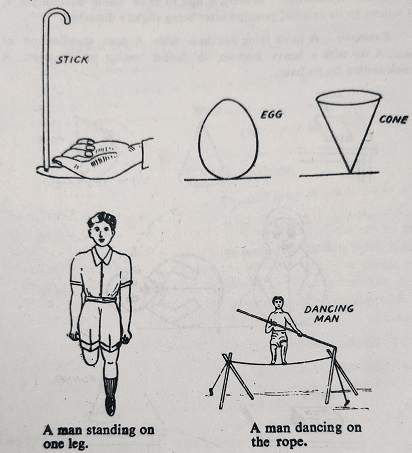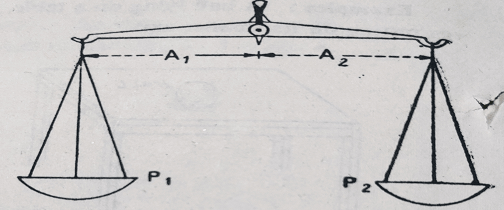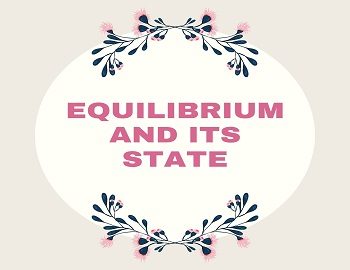Table of Contents
Equilibrium:
You know that when a body is supported at its centre of gravity, it shows no tendency to turn or rotate and hence the body can be said to be in a state of equilibrium. The term equilibrium has, however, a wider meaning and this is used even for a body in uniform motion if two or more forces acting on it do not affect its state. Thus, a body is in a state of equilibrium when two or more than two forces acting on it do not change its state of rest or of uniform motion. Equilibrium is, therefore, the state of balance that maintains the body in its state of rest or of uniform motion. The essential conditions for a body to be in equilibrium are-
- The resultant of all the forces acting on the body should be zero.
- The algebraic sum of the moments of all the forces should be zero.
When a body is at rest, it is in a state of equilibrium that may be stable, unstable, and neutral.
Stable Equilibrium:
A body is said to be in stable equilibrium if it returns to its original position after being slightly disturbed.

Example- A book lying flat on a table, a cone standing on its base, a toy with a heavy bottom, a funnel resting on its base, a brick resting on its base.
Unstable Equilibrium:
A body is said to be in unstable equilibrium, if, after being slightly disturbed, it does not return to its original position but tends to move away.

Example- A stick balanced on a finger, an egg balanced on its longer axis, a cone standing on its apex, a man standing on one leg, a man dancing on the rope.
Neutral Equilibrium:
A body is said to be in a state of neutral equilibrium if, on its slight disturbance, it neither comes back to its original position nor moves further but remains at rest in its new position.

Example- A ball lying on a table, A funnel lying on its side, an egg resting on its smaller axis.
Centre of Gravity and States of Equilibrium:
When a book lying on the table is raised from its side, its centre of gravity is raised; when a metre rod balanced on a knife-edge is slightly rotated about the edge, its centre of gravity is lowered; When a ball resting on a table is rolled, its centre of gravity is neither raised nor lowered. From such observations, we can conclude that if a body is given any slight displacement-
- its centre of gravity is raised in case it is in stable equilibrium.
- its centre of gravity is lowered in case it is in unstable equilibrium.
- its centre of gravity is neither raised nor lowered in case it is in neutral equilibrium.
A suspended body is in stable, unstable or neutral equilibrium when its point of suspension lies vertically above, below or at the centre of gravity of the body, respectively.
Common Balance:
A common balance consists of a beam which carries two weighing pan on its ends. It has its point of support (fulcrum) in the middle.

The common balance offers a good example of an application of the principle of moments. When weighing an object, the object (load) is placed in the left-hand pan and the weights in the right-hand pan. When the moment due to the load (load x load arm) becomes equal to that due to the weights (weight x weight arm), the beam of the balance is balanced and acquires the horizontal position. Thus, whenever the beam is in the horizontal position, the correct weight of an object can be calculated by using the relation:
Load x Load arm = Weight x Weight arm
According to this relation, the load arm need not be equal to the power arm but in order to avoid calculations, it is customary to make the load arm and the power arm equal to one another during the manufacture of balance. For this purpose, a symmetrical beam of uniform density is pivoted at its centre of gravity. When this is the case, the weight of the body is directly given by the weights required to keep the beam horizontal.
A good balance has following essential requirements:
- The two arms of the beam (A1, A2) are of equal length.
- The pans (P1, P2) are of same mass.
- The centre of gravity of the system lies on the vertical line bisecting the beam.
- Plant and Animal Cell
- Mitosis: Process and Significance
- Meiosis: Process and Significance
- Modes of Nutrition
- Process of digestion in human beings
- Components of Blood
- Human Heart Important Facts
- Mechanism or Working of Heart (Cardiac Cycle)
- Human Lymphatic System
- Nervous System
- Cell Structure and Function– NIOS









Comments (No)